
Nakajima
C6N1 'Myrt'
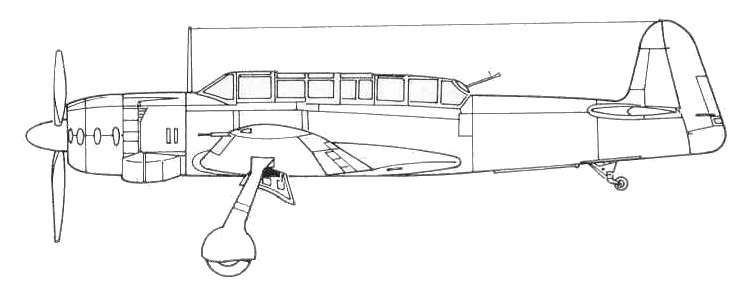
The C6N1 Myrt came about as a result of combat experiences during the Pacific War that indicated that the standard practice of assigning reconnaissance sorties to attack bombers operating from carriers was not entirely satisfactory and that a fast long range carrier borne aircraft was needed. In the spring of 1942 the Naval Staff issued a 17-Shi specification to Nakajima calling for a three seat carrier borne reconnaissance aircraft. The aircraft was to be powered by the Nakajima Homare eighteen cylinder double row radial engine with a four blade constant speed propeller. The fuselage diameter was kept to a minimum, the wings were laminar flow and featured Fowler and split flaps as well as leading edge slats. The first C6N1 was completed in March 0f 1943, one month behind schedule and made its first flight in May of 1943.
The C6N1 demonstrated pleasing handling characteristics during its flight trials but engine problems plagued the test program. Power fell considerably below expectations and as a result the C6N1 failed to meet the specified speed requirements. A total of nineteen prototypes and pre-production machines were build between March of 1943 and April of 1944. Some of these were built with the Homare 21 engine driving a three blade constant speed propeller. Even though the C6N1 failed to meet the speed requirements it offered both speed and range advantages of the D4Y2-C then being used for reconnaissance by Naval carrier based units.
In the spring of 1944, the Homare
21 powered C6N1 was placed into production. Taking advantage
of their range of over 3,000 miles when equipped with a drop
tank, they were able to effectively shadow the US Fleet. With
their speed being almost equal to that of the F6F-5 Hellcat,
they were almost immune from interception. An attack bomber
carrying an externally mounted torpedo was actively being
developed but loss of most of the Japanese carriers eliminated
the need for the type. A night fighter variant was also
developed but its effectiveness as a night fighter was
impaired by the lack of airborne radar equipment and only a
few were converted but they were the fastest night fighters
available for homeland defense. On August 15, 1945 a C6N1 was
shot down it became the last confirmed aerial victory of the
second World War.
The Kit
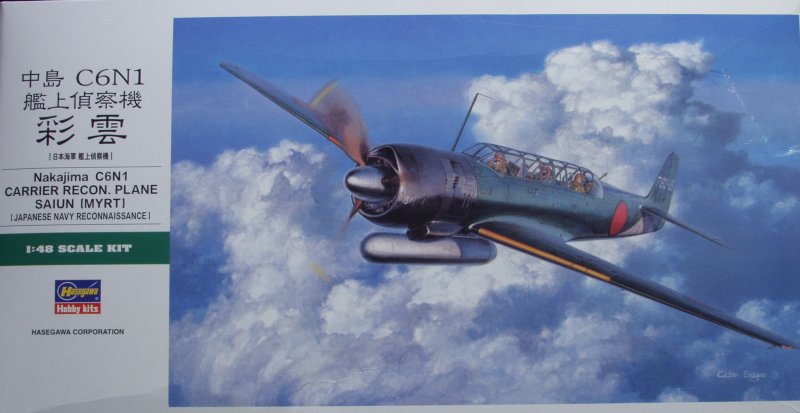
The Hasegawa kit
comes in a sturdy top open two part box with nice
artwork on the top. Inside the box all of the
parts except for the clear parts are in one bag.
The parts are molded in gray and feature recessed
panel lines and rivet and fastener detail. Looking
over the main air frame parts I found no surface
defects and in spite of being bagged together
there was very little evidence of scuffing on any
of the parts. Your experience may vary. The parts
are virtually flash free and the parting lines on
the smaller parts are very light. The cockpit is
very well appointed and should look great right
out of the box. Only those with advanced AMS will
want to add photoetch to the mix.
The flight control surfaces are all fixed in the neutral position except for the flaps which can be assembled up or down. The tires are weighted and the wheel hubs are separate on both sides for easy painting. The engine is a one piece casting that should suffice once buried inside the deep tight fitting cowl. The kit features nice wheel bay detail. The propeller is the multi part type but it does have alignment pins to set the pitch. OK, that's the good news, now for the bad. Ejector pins marks. They seem to be everywhere. The cockpit side walls, floor, interior bulkhead, the insides of the main gear doors, the top side of the flaps, inside the gear bays and the landing gear struts. Some of these are almost expected but it seems this kit has more than its share. Fortunately many of them are light and could be ignored if you wish but it is disappointing to see so many, I expect better from a main stream manufacturer. By my count the kit contains 100 parts in gray although some of them are not used. See below.
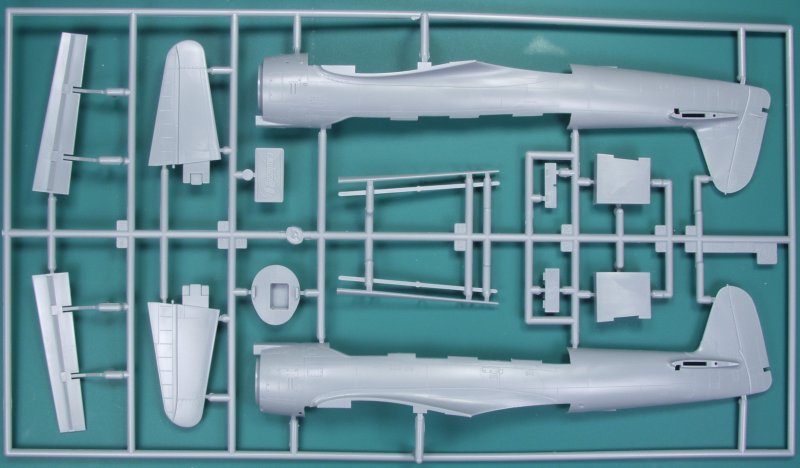
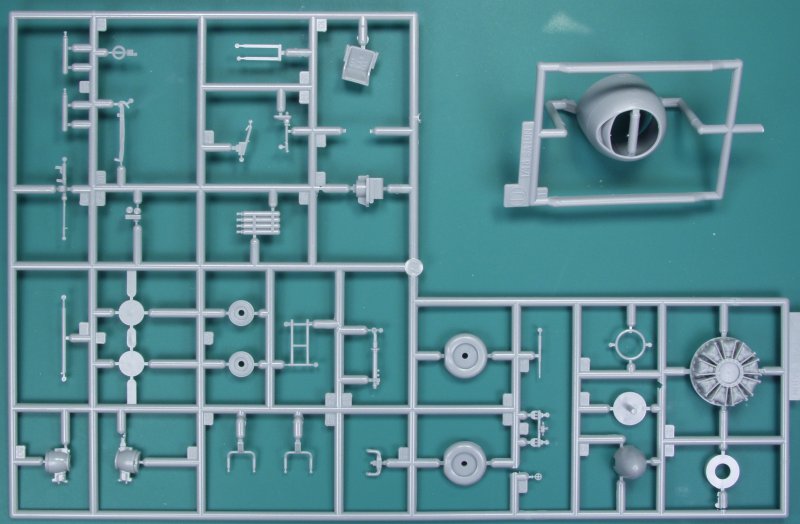
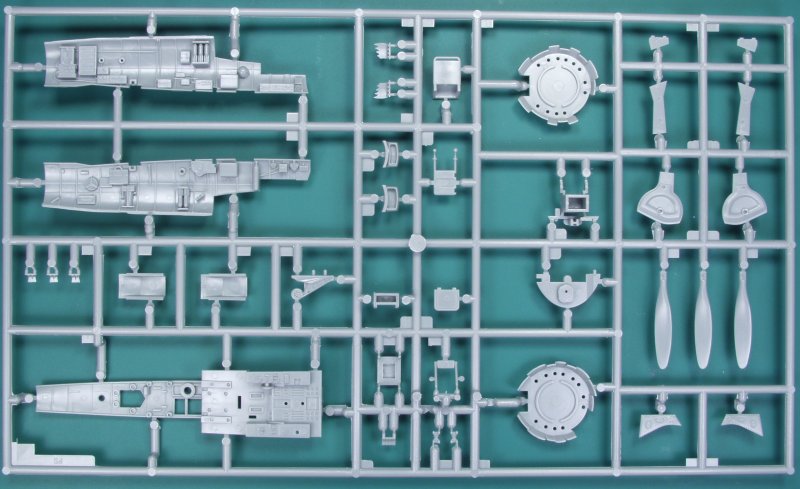
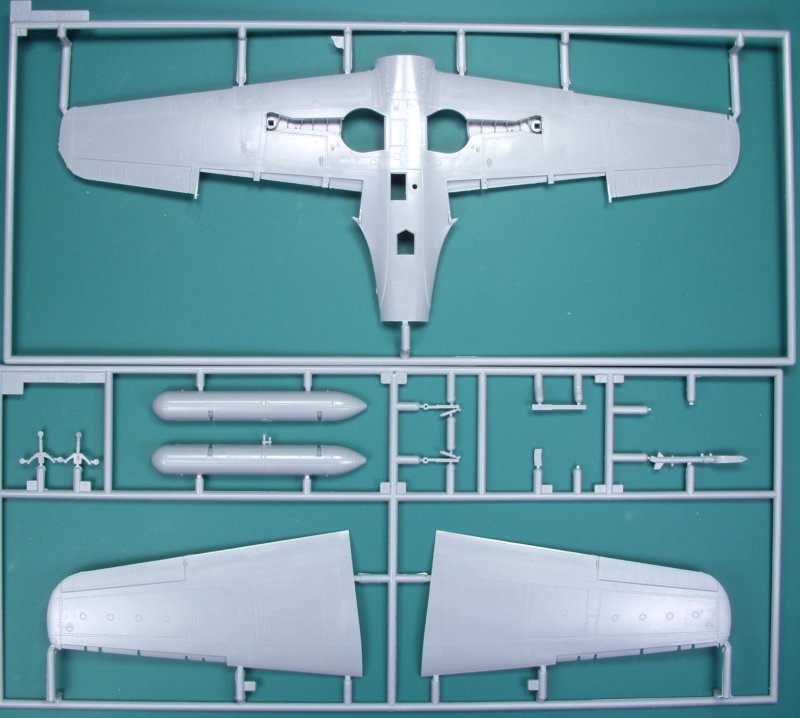
The clear parts are moderately thin and clear although a couple did show some distortion. Parts are supplied to display the cockpit glazing open or closed. All together there are 20 clear parts. See below.
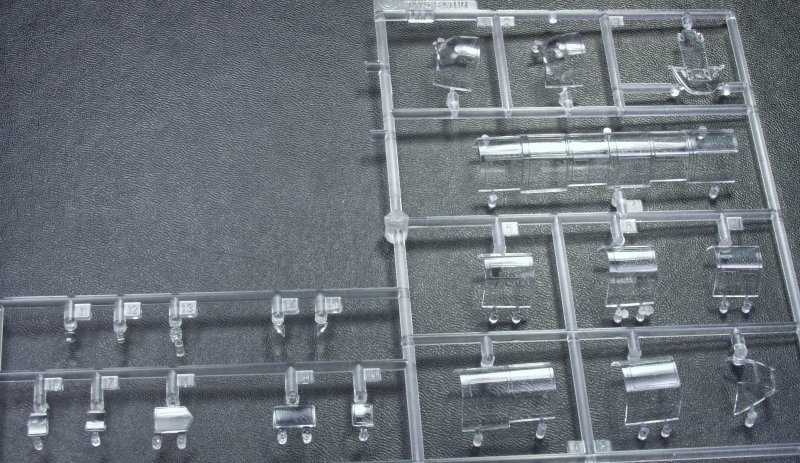
The decals appear a bit thick but are in good register all the instrumentation is provided with decals. The sheet contains markings for two aircraft. See below.
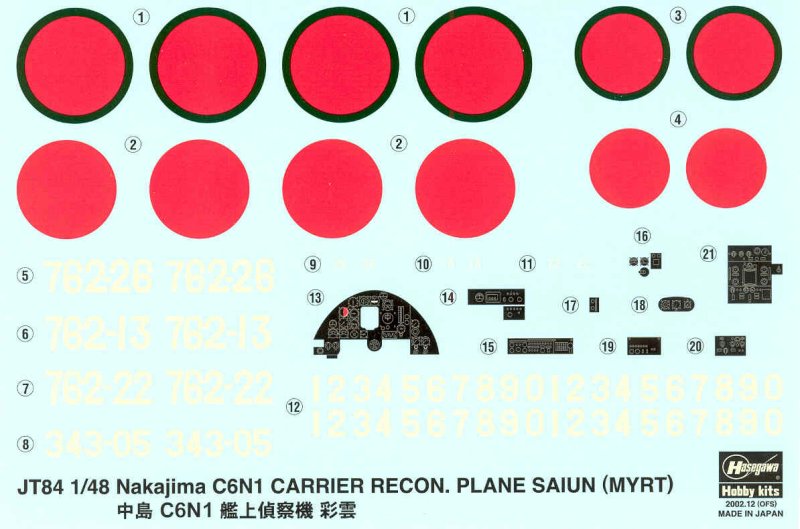
The instructions are provided on an A 4 high, long format sheet which is folded to provided eight panels. The first one has history and specifications in Japanese and English, the next three have the assembly diagrams, the fifth has a parts map and paint chart, the sixth and seventh have painting and marking instructions and the last page has generic decal instructions and the usual CYA safety warning.
After Market Goodies
Eduard makes a photoetch set [48439] and a mask set [ex109]. I am planning on doing the cockpit out of box so I have not acquired the PE set.
Conclusions
This is another well engineered kit from Hasegawa that by all reports fits well and should present no major hurdles to modelers of all skill levels except rank beginners. Highly recommended.
Links to kit build or reviews
Build reviews can be found here and here.
References
Japanese Aircraft of the Pacific War by R.J. Francillon
Back to the Misc Japanese Page